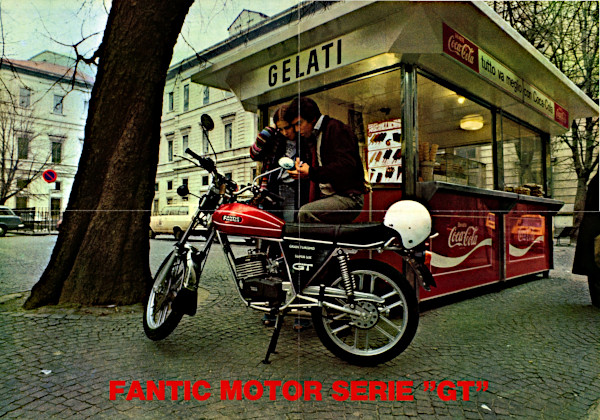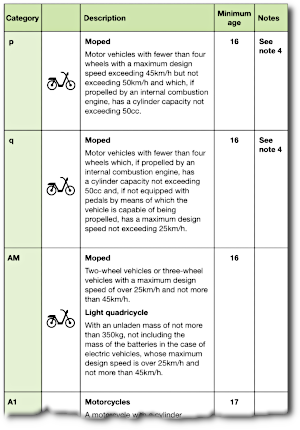Mario Agrati had just graduated from college and returned home to start work in the family Agrati Garelli Company.
Noting that there was an important market for mini-bikes in the USA, and that Garelli did not include these vehicles in its main activities, Mario teamed up with Henry Keppel who was then head of Foreign Sales of Garelli, and they decided to break away from the family business and form their own company focussed on mini-bikes. They also had to come up with a name for the company, and thinking along the lines of the popular Fanta soft drink of the time, and Fantastic Motor (which seemed a bit too long), they came up with a shortened version of Fantic Motor.
Founded by Mario Agrati & Henry Keppel-Hesselink, Fantic Motor began trading in late 1968, before its building in Barzago was even completed, by putting out subcontract manufacture to third parties in Bologna. Production started by building mini-bikes for America, and later progressed toward mopeds, mo-kicks, enduro motor cycles, mini-bikes, and go-karts.
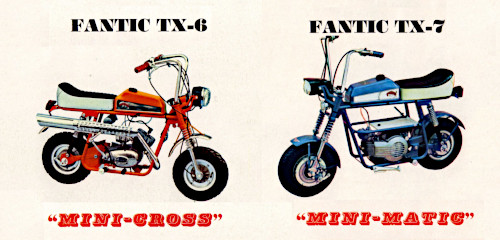
Fantic Motor machines were first imported into the UK in December 1972 by Barron Eurotrade Ltd whose headquarters were based at 51 High Street, Hornchurch, Essex. The idea of forming this company and importing Fantic machines came about as one of the founders saw the 50cc ‘Chopper' model publicised in a motor cycle magazine that his brother in law sent him from America. Along with a number of other European and Japanese manufacturers, Fantic joined Barron’s imports to the UK in December 1972, to meet a new market demand for sporty sub-50cc machines as ‘sixteener’ law now limited sixteen-year-old riders to 50cc.
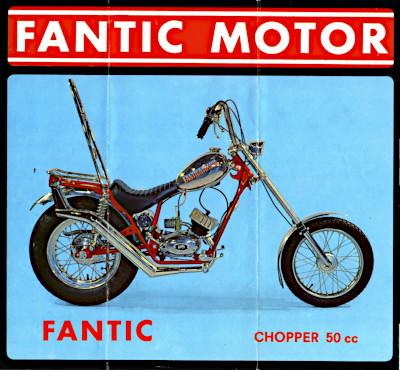
The Fantics’ arrival was spectacularly promoted by the introduction of two sensational moped models powered by high performance 50cc Minarelli six-speed motors: the TI (Tourismo Internazionale) Sports with 14mm Dell’orto carburettor rated at 6bhp@9,000rpm and giving 55mph, and the fantastic Chopper moped rated at 6.8bhp@8,800rpm and giving 52mph. These were much admired, aspired to, and became popular very quickly with a reputation for being some of the fastest mopeds on the market.
It became quite common to find TI models up-rated to 6.8bhp, typically by fitting an after-market 19mm carburettor and manifold kit.
The TI and Chopper models were joined by the Deputy TX7 single-speed Minibike in November 1973. While the TX7 was available in pedal moped or kickstart motor cycle versions, the moped version was more usually found in the UK since it could be ridden at age 16.
In January 1974 the Super-T joined the import list, basically being a four-speed version of the TI with a new alloy cylinder, standardly fitted with a bigger 19mm Dell’orto carburettor for 7.2bhp @ 9,000rpm, and claimed to be capable of 60mph.
A four-speed TI model was added to the range in March 1974, Caballero four-speed from August 1974, and Roma TX & De Luxe single-speed commuter moped models from December 1974.
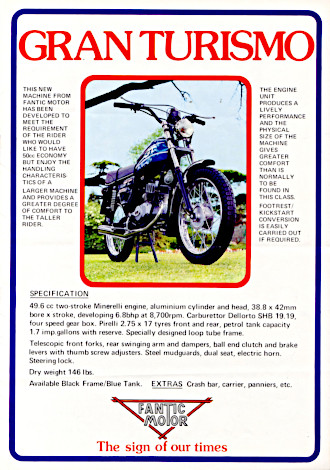
New models for 1975 started with the Caballero 50RC TX180 six-speed in May, then introduction of the four-speed GT from July 1975.
The GT TX200 was a kickstart motor cycle with four-speed foot change, while the GT TX201 was a four-speed foot change moped version with a dangly-pedal set.
The GT initials were originated from the Italian Gran Turismo, which directly translates as Great Touring.
Our Fantic GT started life as a basic model TX201 four-speed 1976 model originally fitted with a 49.6cc Minarelli P4 pedal motor of 38.8mm bore and 42mm stroke, with Dell’orto SHB19/19 carb, probably rated at 7.2bhp @ 9,000rpm, and claimed capable of speeds up to 60.5mph—but that was nearly 50 years ago, and things have changed…
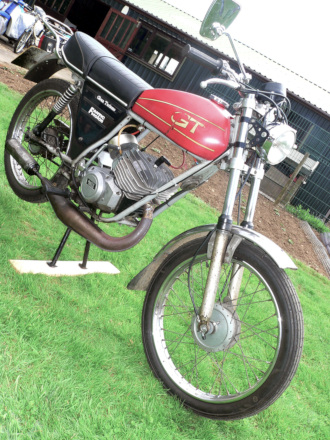
The original Gran Turismo advertising text stated that ‘Footrest/kickstart conversion is easily carried out if required’, and that’s exactly what happened to our featured GT, so it’s now a Mo-kick 50cc motor cycle which has been refitted with a P6 kickstart ‘Competition’ CR 50 Series-1 (1977-78) Corsa-Corta motor from an Italjet scrambler. This has a 40.3 × 39mm short-stroke engine with close ratio gearbox, big fin cylinder with chrome bore, radial fin head and Minarelli factory expansion pipe with end-fitting silencer. Believed rated at 13bhp with the original Dell’orto PHBH28BS (28mm) carburettor, this proved too wild and temperamental for road use, so was slightly ‘tamed’ by fitment of a Dell’orto VHB22BS (22mm) carb. The Motoplat electronic ignition set does not have any generator output, so the lights and horn are powered by a small 12V dry cell battery fitted in the air-box.
So what can we tell you about the bike? It’s a typical 48-year-old 50cc motor cycle of its time, with traditional twin shock rear suspension. 2.50–18 wheels & tyres, and weighs in at 31kg front & 38 kg rear = 69kg in total.
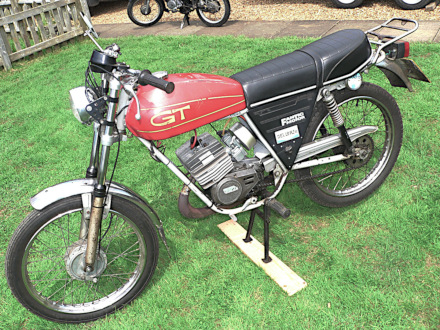
This is no pretty, shiny restoration, it’s scruffy and weathered with tired paintwork, dents in the tank, a rusty and welded expansion exhaust with home-made silencer, hi-level handlebars, and probably now appears like an old commuter go-to-work transport, which is what we’d probably describe as a Q-bike.
No, that’s nothing to do with any DVLA ‘built from bits’ kit-bike registration.
The reference actually relates to Q-ships, a Royal Navy World War 1 initiative of heavily armed merchant vessels with concealed weaponry, designed to lure submarines into making surface attacks, which gave the Q-ships the chance to open fire and sink them.
A Q-bike is most usually an innocuous and tatty, old-style bike with a motor performance significantly exceeding its appearance, so when some modern scooter tries to burn it off from the traffic lights … there’s an unexpected surprise!

So it all comes down to how this bike performs.
There’s a left-hand gear-change with selection one-down & five-up.
The motor starts easily enough and quickly settles on tickover. Gear selection clicks in fine, but even in first you instantly appreciate this is a very ‘peaky’ motor: no torque, then revs like crazy! Going up through the six gears is a sequence of rapid changes and throttle bursts, though surprisingly there are no issues with the front end lifting up, so it provides enough confidence to give it the gun from the line.

The CEV speedometer indicates 0-80mph, but proves an unreliable instrument for useful indications as the needle gives vague indications up to 30+, then starts swinging wildly, beyond which it becomes pointless even looking at it. It’s necessary to keep the revs on the boil to get effective acceleration on the throttle, but it certainly delivers the beans with a creditable take-off that requires our pace vehicle to press hard to catch up. Usual procedure with these P6 boxes is just keep clicking up the gears until you run out, but with this motor being so rev sensitive, an early change will find the motor stuck in the dead zone.
A good example of being stuck in the flat spot is running along at an indicated 30 in fourth, then opening the throttle wide, and being completely unable to increase the revs at all because we’re below the power band. There are two choices: pull the clutch to slip the revs back in, or cog down to third, then GT takes off like a rocket.
Best speed was recorded on a long shallow downhill paced at 55mph on the sat-nav. This run couldn’t be held full-on due to an approaching bend, so maybe another couple of mph could have been squeezed out under ideal conditions, but this was pretty impressive for a road spec chassis without drop bars and rear-sets to enable a full tuck-down position. Where this GT scores most is its blistering acceleration and, since the bike seems to be capably revving out in top gear, it’s easy to conclude that a gear-up and drop bars could easily take it past 60mph. But top speed isn’t all, and in a 50cc drag race from the lights, this Fantic GT could take a lot of beating. Not quite the actual fastest 50 we’ve tested, but off our test track and with high bars, the performance is quite impressive.
Handling proved capable enough within the performance, probably helped by the duplex cradle frame design and decent gauge front forks mounted in stout cast alloy yokes.
A 1977 Motorcycle Mechanics Magazine described the Fantic GT as ‘the closest a moped will ever get to a real motorcycle’, and was slightly faster and more comfortable than other Fantic models of the time. Introduction of GT versions with the popular six-speed gearbox was a further strong selling point from February 1977 with the GT Super 6, and GT6 from August 1977.
Maybe just to confuse everybody, there were several further iterations of the GT:
| Super Six TX240 | six-speed (dangly pedals, foot-change, high handlebars) | ||
| Super Six TX220 | (KL4?) | six-speed (kickstart motor cycle, low handlebars) | |
| Super Six TX220 | Motoleggera | six-speed | |
| Super Six TX220 | KL4 | six-speed (kickstart motor cycle, low handlebars) | |
| TX270 | four-speed (kickstart motor cycle) |
The GT six-speed was de-listed in April 1981, but the four-speed continued into 1984.
